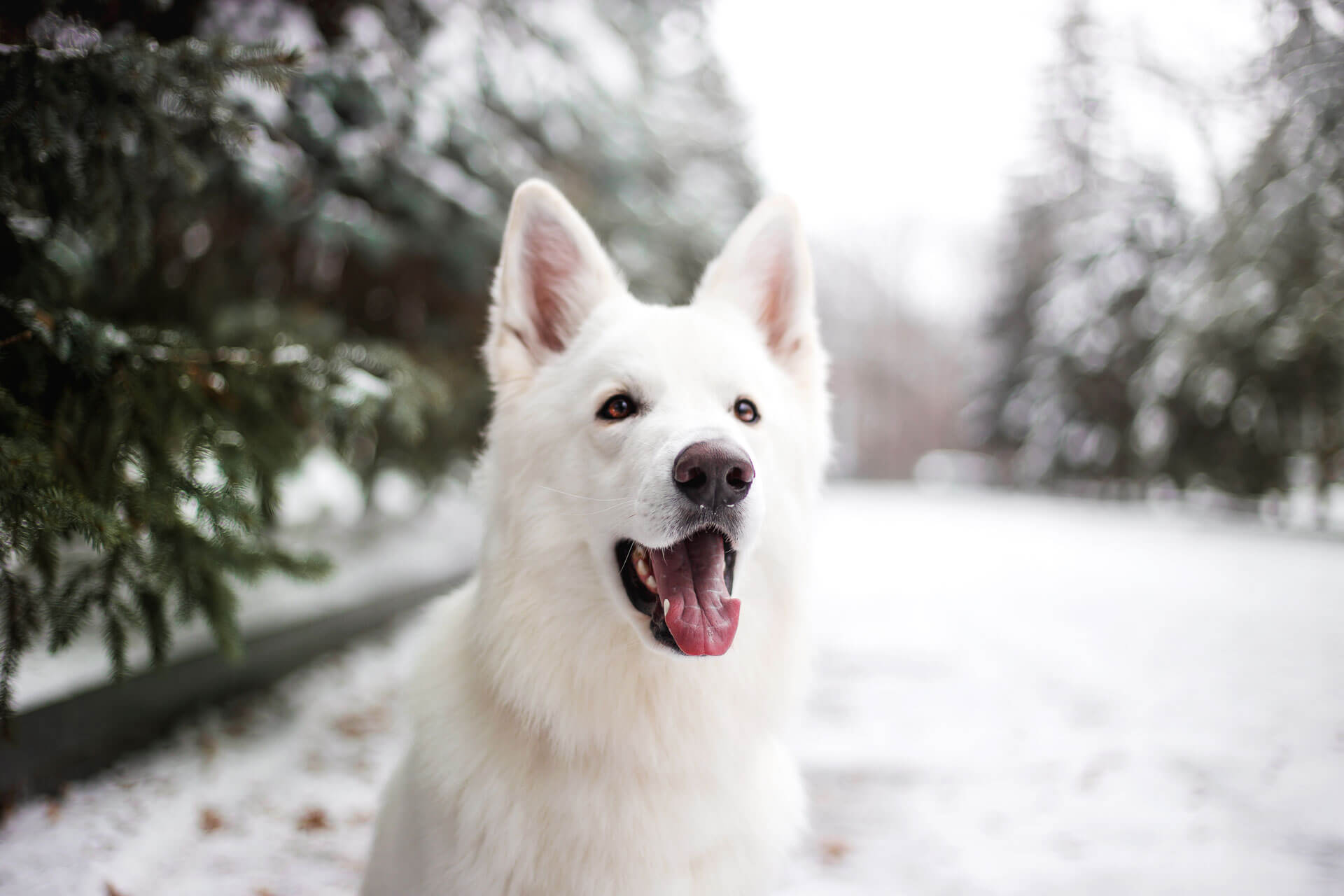Dogs are known for their barking, and each bark has a different meaning behind it. From fear to play to aggression, various dog barks have a message that we must learn to understand.
A dog can vary the pitch of its bark, the number of barks in a row, and the space between barks to change the bark’s meaning. Understanding the different types of barking in dogs can help strengthen the bond between dogs and their owners.
You are reading: 9 Types Of Barking In Dogs And What They Mean
In this article, we will discuss the most common types of barking in dogs and what they mean.

9 Types Of Barking In Dogs And What They Mean
“Welcome Home” Bark

Dogs bark for various reasons, and each bark has a different meaning behind it. One of the most common types of barking in dogs is the “Welcome Home” bark.
Many dogs will bark in their average tone to welcome their owners home or even welcome someone else into the house. This could be just a few barks or ongoing, and these barks may be accompanied by a loose, happy tail wag, confident posture, and stomping or jumping with the front feet in excitement.
The “Welcome Home” bark is likely higher in tone and is not an aggressive bark, but rather a way for dogs to express their happiness and excitement to see their owners.
Playful Bark

Dogs bark for various reasons, and one of the most common types of barking in dogs is the playful bark. A playful bark is usually higher-pitched and serves as an invitation to play.
This type of barking is often accompanied by a loose, happy tail wag and wriggly, loose body language. Dogs may also make a series of high-pitched yips and yaps, almost like squealing, to indicate their excitement and desire to play.
Playful barking is a way for dogs to communicate their happiness and eagerness to engage in playtime with their owners or other dogs. It is important to note that not all barking used to indicate playfulness sounds the same, and each dog may have its unique way of expressing its desire to play.
“Please Play” Bark
Dogs bark for various reasons, and one of the most common types of barking in dogs is the “Please Play” bark. A dog might bark to show someone that they want to play, whether it’s their owner or another dog they pass on a walk.
This type of barking is usually accompanied by other playful body languages like bowing with their head toward the ground and rear in the air, jumping around, and a loose tail wag. Some dogs can get downright pushy about this and continue to bark until the other person or dog gives in.
The “Please Play” bark is typically higher-pitched and not an aggressive bark, but rather a way for dogs to express their desire to engage in playtime. It is important to note that each dog may bark differently to indicate their desire to play, and it is up to the owner to learn their dog’s unique language.
Anxious Bark

Read more : Why Does My Dog Wait Outside The Bathroom?
Dogs bark for various reasons, and one of the most common types of barking in dogs is the anxious bark. An anxious bark is usually high-pitched and may be accompanied by other signs of anxiety, such as pacing, whining, or destructive behavior.
Anxious barking is caused by anxiety or fear and often happens when a dog sees a “trigger” such as a stranger, another dog, or a motorcycle. To stop anxious barking, it is essential to identify the source of anxiety and either eliminate it (if possible) or train the dog to accept it.
Making a dog’s life more interesting and giving them many things to think about can help reduce anxious barking by reducing their overall level of stress.
When dealing with anxious barking, it is critical to avoid using aversives (shock collars, etc.), since these will only increase the dog’s level of stress. Instead, use dog-friendly methods, such as counterconditioning and desensitization (CC&D), to teach your dog to accept the triggers more calmly. In some cases, dogs with separation anxiety or other forms of anxiety may need medication to help reduce their baseline anxiety.
Frustration Bark
Dogs often bark out of frustration or boredom when left alone for long periods or when they are kept in a confined area with little stimulation. This type of barking is called the frustration bark.
Dogs may also bark out of frustration when they can’t get to something they want, such as a squirrel or a dog in the next yard or kennel run. Unfortunately, barking is usually just the beginning of a dog expressing its frustration. If the situation isn’t rectified, a frustrated dog can become destructive either to the environment or to themselves.
Frustration barking can usually be avoided by giving a frustrated dog more stimulation in the form of exercise of the mind and body and companionship. Dogs are very social creatures, and companionship may be with another animal such as a dog or cat. But the best type of companionship is usually an attentive owner who spends quality time with the dog.
If you are unable to increase the level of time and activity you spend with the dog, there are some excellent toys that are stimulating to dogs. The key is to understand why the dog is frustrated and make a plan to alleviate that frustration through a mutually agreeable activity.
Warning Bark
Dogs bark for various reasons, and one of the most common types of barking in dogs is the warning bark. A warning bark is usually a deeper pitch and may be accompanied by other signs of aggression, such as growling or baring teeth.
This type of barking is often triggered by a perceived threat, such as a stranger approaching the dog’s territory or a dog approaching the dog’s owner. A warning bark is a dog’s way of communicating that they feel threatened and are ready to defend themselves or their owner if necessary.
It is important to note that while a warning bark is not necessarily an aggressive bark, it is a sign that the dog is feeling threatened and should be approached with caution. If a dog is barking in warning, it is best to remove them from the situation or to calm them down before attempting to interact with them.
It is also important to note that some dogs may be more prone to warning barks than others, and it is up to the owner to learn their dog’s unique language and triggers.
“Intruder Alert” Bark
Dogs bark for various reasons, and one of the most common types of barking in dogs is the “Intruder Alert” bark. This type of barking is usually a series of deep, loud barks that are meant to alert their owner to the presence of a stranger or potential threat.
Dogs may bark in this way when they see someone approaching their territory, such as a mailman or a delivery person. The “Intruder Alert” bark is a dog’s way of communicating that they feel threatened and are ready to defend themselves or their owner if necessary.
It is important to note that while this type of barking is not necessarily an aggressive bark, it is a sign that the dog is feeling threatened and should be approached with caution. If a dog is barking in “Intruder Alert” mode, it is best to remove them from the situation or to calm them down before attempting to interact with them.
It is also important to note that some dogs may be more prone to “Intruder Alert” barks than others, and it is up to the owner to learn their dog’s unique language and triggers. If you want to train your dog to bark at intruders, you can teach them the “Speak” command and then have a volunteer approach the house and pretend to be an intruder.
Growling Bark
Read more : When To Euthanize A Dog With Hemangiosarcoma
Dogs growl for various reasons, and it is a form of canine communication that has many triggers. Growling is a low, menacing rumble that dogs use in all kinds of situations, from guarding their favorite bone to playing tug-of-war. Some growling is positive, and many dogs grunt and grumble during playtime because they’re having fun.
However, other growls have an entirely different meaning, and a dog might growl to threaten another dog or as a response to feeling cornered. Growling is also a common symptom of resource guarding, and an injured dog will often growl to keep others at bay. In these cases, growling indicates that something is bothering the dog.
If a dog is growling, it is essential to determine what’s bothering them and then treat that underlying issue. The most effective way to deal with growling is to change the situation to suit the dog and determine what specifically led to the growling. Some medical problems may cause growling or barking, and older pets experiencing senile changes may have barking problems.
Howling Bark
Dogs howl for various reasons, and it is a form of communication that has many triggers. A howl is a loud, drawn-out, mournful cry that differs from a bark, which is quick and explosive. Howling is primarily meant to communicate with other dogs, and it can be an expression of pain, either physical or emotional.
Dogs howl in response to loud and extended sounds, such as sirens, crying babies, and singing. Sometimes, the negative emotions, such as boredom or annoyance, are less serious but still obviously unpleasant for the dog, resulting in howling. Dogs may also howl to get attention, make contact with other dogs, and announce their presence.
If a dog is howling, it is essential to determine what’s causing it and then treat that underlying issue. If the howling is based on how the dog feels about a situation, you’ll need to change their motivation and feelings. If the reason for the dog’s howling is unclear, it’s a good idea to check them out for signs of pain or discomfort.
FAQS
1. What are the different types of barking in dogs?
The different types of barking in dogs include the “Welcome Home” bark, playful bark, “Please Play” bark, anxious bark, frustration bark, warning bark, “Intruder Alert” bark, growling bark, and howling bark.
2. What does a “Welcome Home” bark mean?
A “Welcome Home” bark is a dog’s way of expressing their happiness and excitement to see their owners. This type of barking is usually higher-pitched and not an aggressive bark.
3. What is a playful bark?
A playful bark is usually higher-pitched and serves as an invitation to play. This type of barking is often accompanied by a loose, happy tail wag and wriggly, loose body language.
4. What is an anxious bark?
An anxious bark is usually high-pitched and may be accompanied by other signs of anxiety, such as pacing, whining, or destructive behavior. This type of barking is caused by anxiety or fear and often happens when a dog sees a “trigger” such as a stranger, another dog, or a motorcycle.
5. What is a frustration bark?
A frustration bark is usually a deeper pitch and may be accompanied by other signs of frustration, such as pawing or scratching. This type of barking often happens when a dog is left alone for long periods or when they are kept in a confined area with little stimulation.
6. What is a warning bark?
A warning bark is usually a deeper pitch and may be accompanied by other signs of aggression, such as growling or baring teeth. This type of barking is often triggered by a perceived threat, such as a stranger approaching the dog’s territory or a dog approaching the dog’s owner.
7. What is an “Intruder Alert” bark?
An “Intruder Alert” bark is usually a series of deep, loud barks that are meant to alert their owner to the presence of a stranger or potential threat. This type of barking is a dog’s way of communicating that they feel threatened and are ready to defend themselves or their owner if necessary.
8. What is a growling bark?
A growling bark is usually a low, rumbling sound that is meant to warn others to stay away. This type of barking is often used by dogs to threaten another dog or as a response to feeling cornered.
9. What is a howling bark?
A howling bark is usually a long, drawn-out sound that is meant to communicate over long distances or to other dogs. This type of barking can be an expression of pain, either physical or emotional, and dogs may howl in response to loud and extended sounds, such as sirens, crying babies, and singing.
Source: https://petstutorial.com
Category: DOGS










